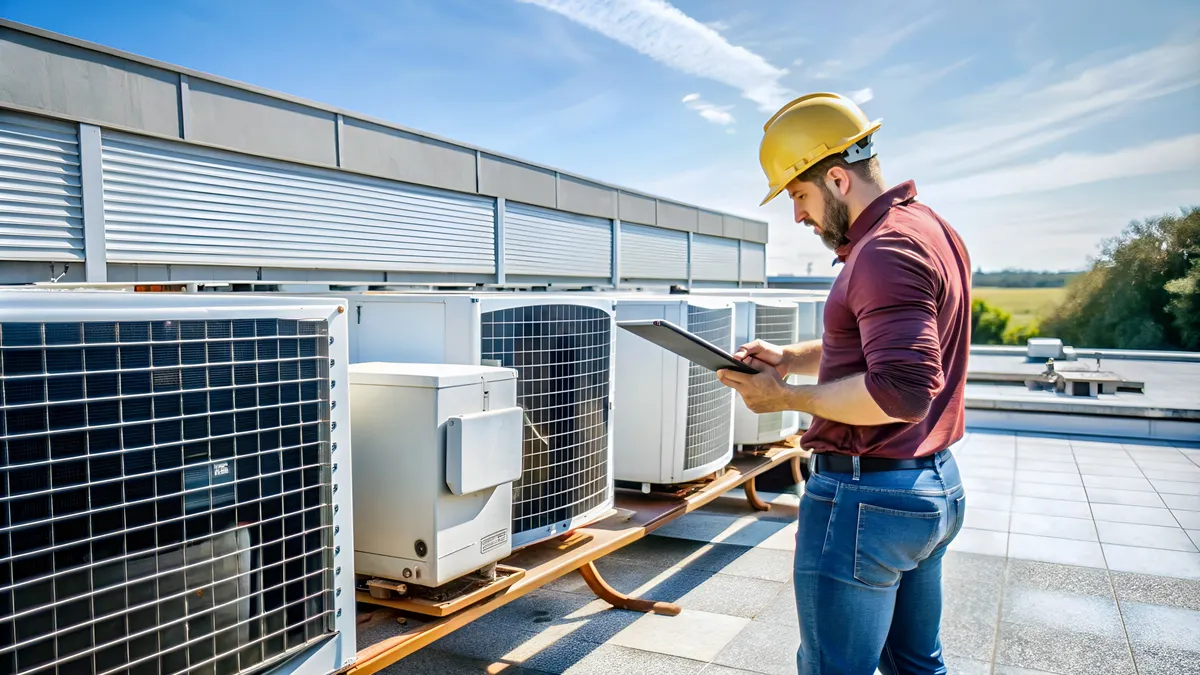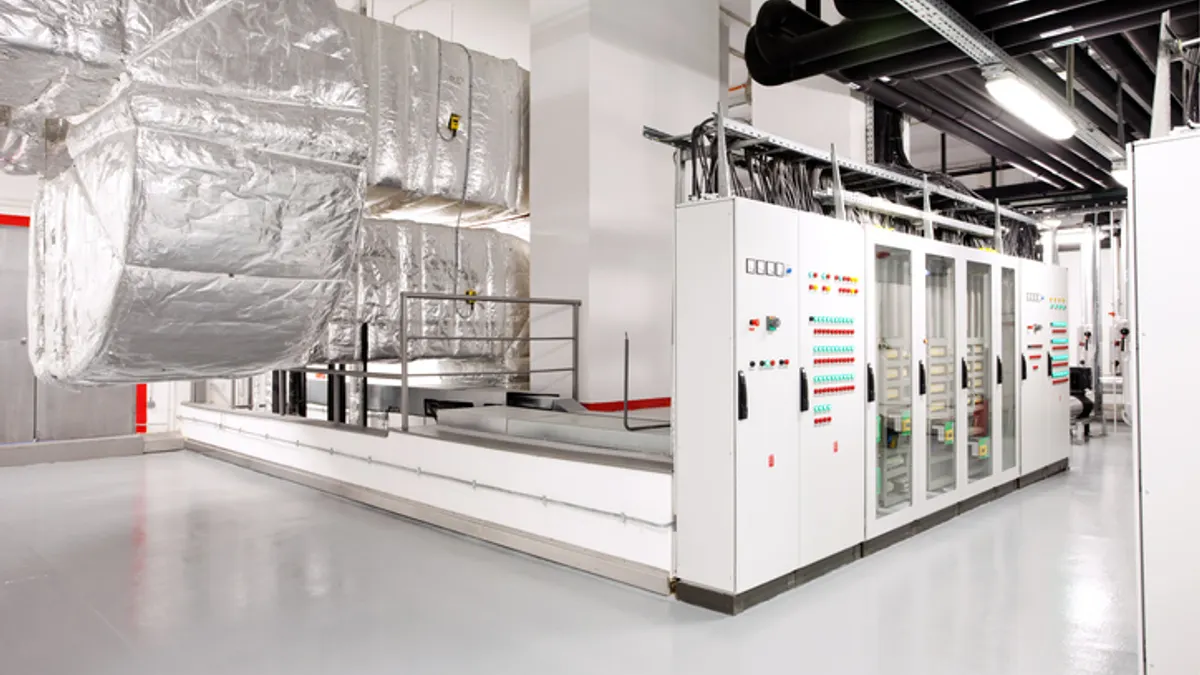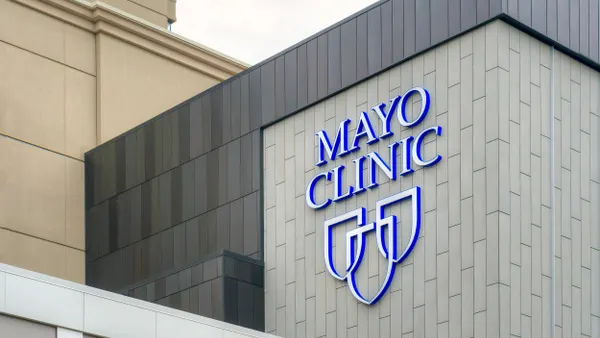Here’s the truth about managing HVAC across multiple sites: by the time a problem lands on your desk, you’re probably already too late.
It’s 7pm on a Friday night and you get the call: “It’s 78° in the dining room.”
Customers have left. Staff productivity has taken a nose dive. And that emergency truck you’re rolling instead of kick-starting your weekend? It’ll cost you ten times what replacing the fan belt during a routine service call would have.
If this sounds familiar, you’re not alone.
But here’s the good news: most major HVAC failures start small. And with early intervention and proper ongoing maintenance, many can even be avoided altogether.
“The more you spend on preventative maintenance, the further ahead you’ll be in the long run,” says Gino Passarelli, Vice President at GHC Mechanical. “You’ll save on repair costs and even extend the life of your equipment by up to 30%.”
The key is more visibility, knowing what to look for and what to do when you find it.
“When a ticket comes in, it’s usually either ‘it’s too hot’ or ‘it’s too cold’,” says Andrew Gaichuk, HVAC expert and Commercial Support Lead at Mysa HQ. “But what’s actually causing that issue? Without an EMS, facilities managers will usually have no idea and no way of looking into it before rolling a truck.”
Here are the five most common commercial HVAC failures, how an energy management system can help you spot them and what you can do to proactively prevent them from happening in the first place.
1. Compressor failure
Frequency: 25–30% of major service calls
Cost to repair: $2,500–$6,500 (often requires multiple site visits)
How it happens:
When the compressor—the “heart” of your HVAC system—fails, refrigerant stops circulating and everything shuts down. The causes are often small and preventable: dirty coils, undetected refrigerant leaks, faulty thermostats or voltage fluctuations (even a 3–5% imbalance can shorten motor life).
What to look out for:
- Units running constantly but not cooling properly
- Warm air from vents during cooling mode
- Repeated breaker trips
- Grinding sounds from the rooftop
- Frost on refrigerant lines
How to prevent it:
- Schedule coil cleaning twice per year.
- Set temperature alerts in your EMS to flag units struggling to hit setpoint.
- Monitor suction pressure and cycle frequency for early signs of stress.
2. Fan and blower motor failure
Frequency: 20–25% of major service calls
Cost to repair: $800–$2,000 (ECM or variable-speed motors push costs higher)
How it happens:
When a fan or blower motor fails, air stops moving through your HVAC system—which means no airflow to the building, no matter how well everything else is working. Belt wear, bearing fatigue, dirty blower wheels and voltage problems typically cause the motor to overheat and quit. Locations near highways or restaurants are at a higher risk, since dust, grease and debris accelerate wear on these components.
What to watch for:
- Weak or no airflow from vents
- Hot and cold spots throughout the building
- Unusual quietness (fan not running) or loud squealing and grinding noises
- Burning smell near vents or roof area
- Unit cycles on but no air is moving
How to prevent it:
- Check belt tension quarterly
- Monitor vibration or amp draw to flag early failures
- Lubricate bearings during scheduled maintenance
- Use an EMS with wireless sensors to track the ambient temperature throughout your space and identify any hot or cold spots
3. Electrical and control failures
Frequency: 15–20% of major service calls
Cost to repair: $300–$1,200 (full control board swaps can exceed $1,500)
How it happens:
These failures happen when the components controlling your HVAC system—thermostats, sensors, contactors—stop communicating properly or fail outright. Loose terminals from vibration, worn contactors that arc and degrade and sensors that drift in extreme weather are the usual suspects. Patchwork repairs over time often create the problem, as multiple contractors introduce mismatched components that create chronic reliability issues.
What to look out for:
- Systems that don't turn on or off when expected
- Blank or flickering thermostats
- Mid-cycle stops followed by sudden restarts
- Lights dimming when the RTU starts (indicates high current draw)
- Inconsistent temperature readings or total loss of thermostat control
How to prevent it:
- Standardize thermostat replacements across your portfolio
- Ensure your preventative maintenance checklist includes capacitor testing
- Track control board age and plan proactive replacements
- Use remote monitoring through an EMS to catch drift before it becomes failure
4. Dirty or corroded coils
Frequency: ~15% of major service calls
Cost to repair: $400–$600 for cleaning, $1,000–$1,500+ for replacement
How it happens:
Your coils are responsible for heat exchange, but when they become fouled or corroded, they can’t do their job. Lack of regular cleaning is the main culprit, though coastal salt exposure and urban air pollution accelerate corrosion on fin surfaces. The efficiency impact is massive: the Department of Energy found that a moderately dirty coil increases electricity use by 39 percent for a 3-ton unit and 47 percent for a 5-ton system. Left unchecked, this often leads to refrigerant leaks and eventual compressor failure.
What to look out for:
- Units running constantly but never reaching set temperature
- Humid or “muggy” air despite cooling
- Warm air blowing from vents despite being in cooling mode
- Icing visible on lines or reported by techs during service
- Higher-than-normal energy bills with no change in occupancy
How to prevent it:
- Mandate documented coil cleaning (with photos) in preventative maintenance contracts
- Schedule cleanings based on location risk—coastal and urban sites need more frequent attention
- Use your EMS to monitor how well your HVAC coils are heating or cooling
5. Economizer and damper failures
Frequency: 10–15% of major service calls
Cost to repair: $600–$1,800 (simple actuator replacement on the low end, full damper assembly rebuild on the high end)
How it happens:
When weather conditions are just right, an economizer brings in outdoor air for “free cooling”—but when it fails, your HVAC system works harder than it needs to. Stuck or frozen dampers, broken actuators, disconnected wires and sensors that drift out of calibration are common causes. Economizers are rarely retested after installation, so these failures can waste energy for months or years before anyone realizes something’s wrong.
What to look out for:
- Stuffy indoor air quality
- Temperature swings between hot and cold (especially spring and fall)
- Units running when outdoor temperatures would allow free cooling
- Lingering odors or stale air in occupied areas
How to prevent it:
- Conduct annual economizer function testing
- Calibrate outdoor air sensors regularly
- Document economizer performance in PM reports
- Add temperature sensors inside damper cavity and use your EMS to validate proper function
You can’t fix what you can’t see
Avoiding HVAC chaos starts with visibility. Energy management systems are a great way to monitor assets across your entire portfolio so you can set and enforce temperature standards, track performance over time and, most importantly, troubleshoot tickets before you send a tech.
“When a ticket comes in, you want to be able to pull up an HVAC run-time report, pinpoint where the issue might be stemming from and prep your contractor before they head on-site,” Andrew says.
Gino agrees. “The goal for most facilities managers is to resolve issues as quickly as possible,” he explains. “Skilled labor is expensive. The faster we can get a tech in and out, the better.”
Your front-line teams are another critical defense. By giving them a simple HVAC health checklist of red flags, they’re more likely to notice issues—unusual sounds, smells or temperature changes—early and help you stay ahead of failures across every site.
Remember: you don’t need to be an HVAC expert to be more proactive about preventing HVAC failures. Most breakdowns start small and with the right knowledge foundation and real-time visibility, you can catch those issues before they spiral, protecting your budget, your equipment and your peace of mind.
Mysa HQ empowers facilities managers to proactively prevent HVAC downtime, cut costs and escape the break-fix cycle. Combining enterprise visibility and control with quick and easy deployments, Mysa HQ is an energy management system that’s right-sized for the needs of small-box multi-sites—because smart HVAC management doesn’t need to be complicated. Get a product demo today.










